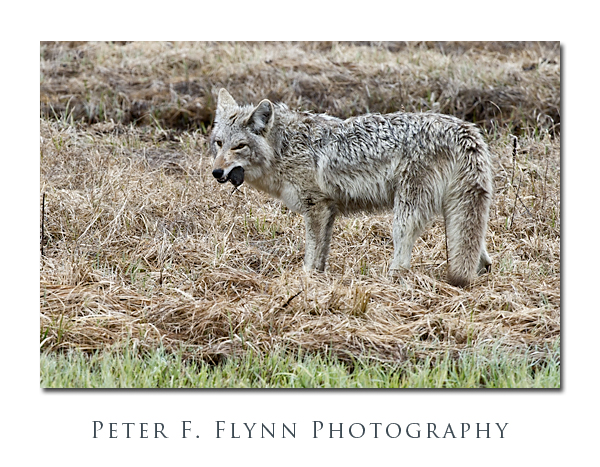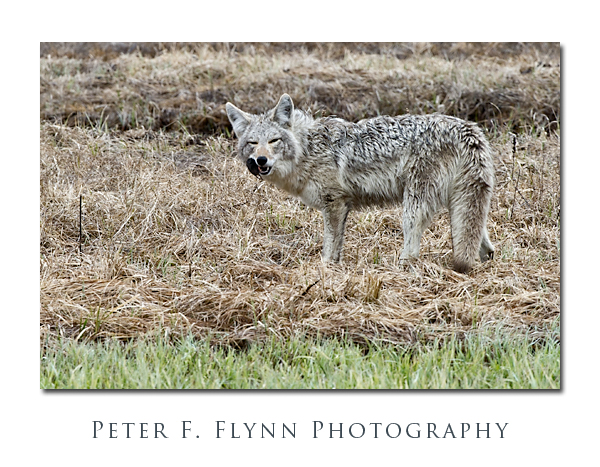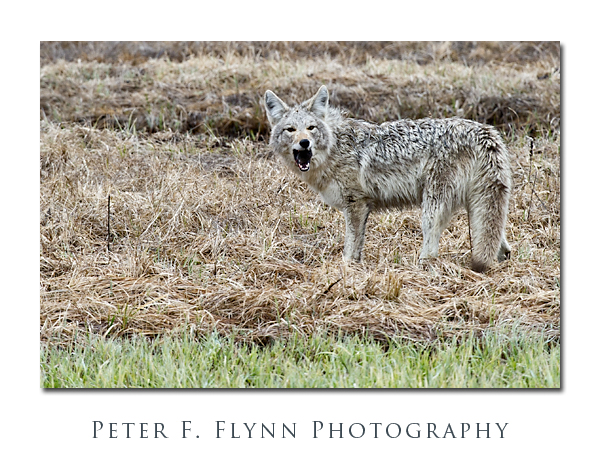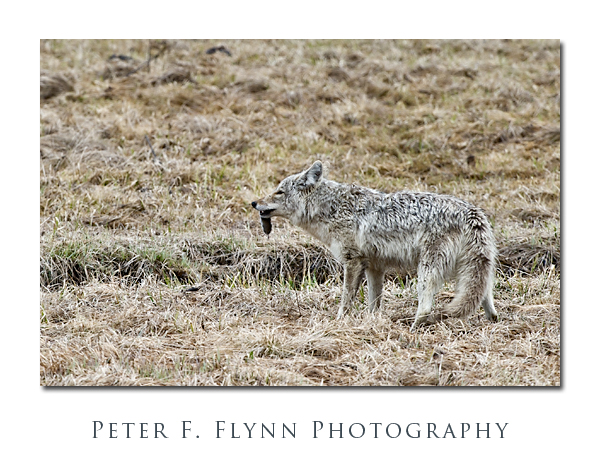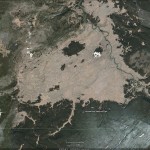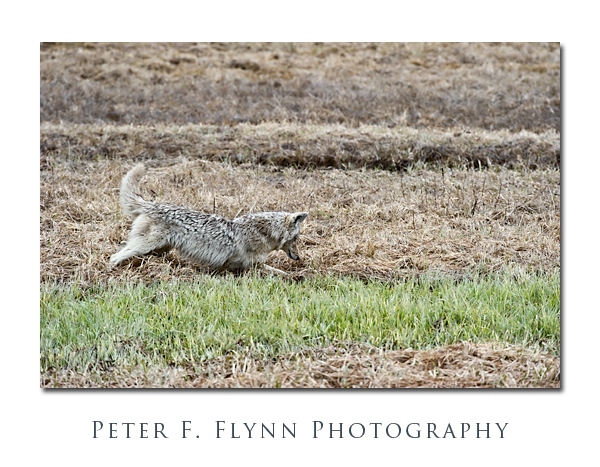
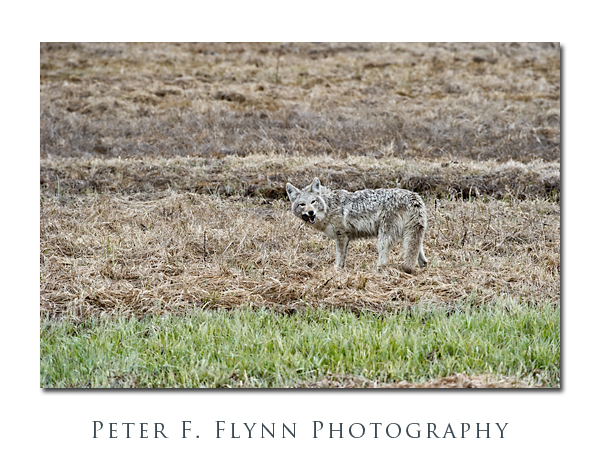
The images above of a coyote executing effective mousing technique were recorded at around 12:00 on May20, 2010, using the Nikon D3s and the AF-S NIKKOR 200-400mm f/4G ED VR lens at 400mm. Handheld. Exposure was f/8 at 1/2000s, ISO 1600. I see that you think that perhaps 1/2000s was overkill… Spend a few days shooting wild critters and you’ll come around.
The rain abated long enough for us to make a run for Artist’s Point to record images of the Grand Canyon of the Yellowstone River. It’s simply an awesome location – easily as elegantly beautiful as the, well, real Grand Canyon, without the hoard (but do note the time of year). Do not miss this.
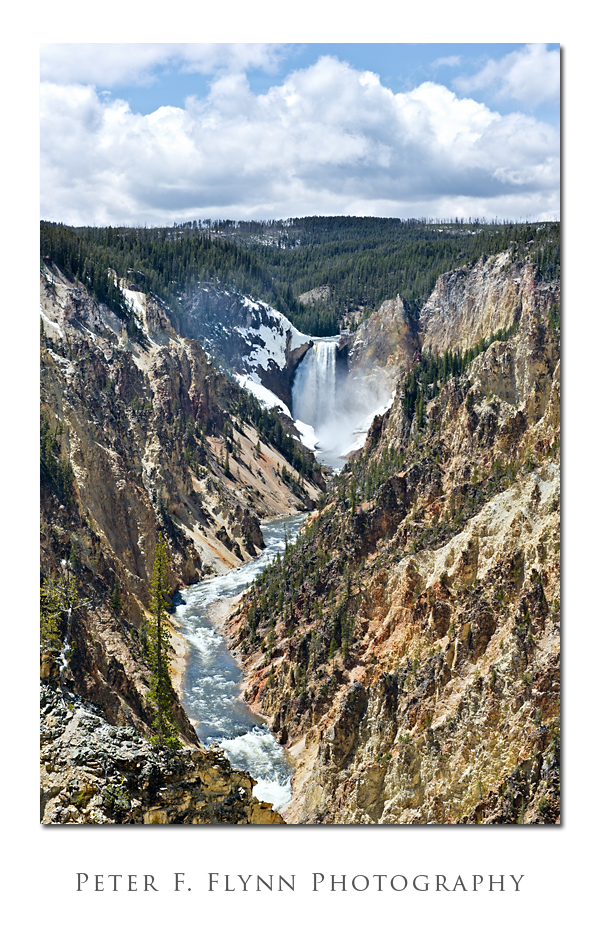
Finally, and as promised, the now long-awaited story of the incident at Blacktail Lakes… Driving back westward from the Lamar Valley we encounter a traffic jam at Blacktail Lakes. As I run the truck up slowly behind the jam, we hear the unmistakable call of the wolf : Loud, solo, and clear. Then other members of the Blacktail Wolf Pack respond, and soon a cacophony of howls and barks fill the air. Spooky in a kooky species-memory sort of way, and unforgettable.
The sow bear and her big cub were defending the carcass from nine members of the Blacktail wolf pack. Four wolves remain close to the bears, menacing and harassing them continuously. Three other members of the pack pose a little further away, and two more a bit further yet. The interaction of wolves and grizzlys is as wild as it gets I suspect. Griz may be the king of the park, but the wolves haven’t got the news, and most probably couldn’t care less. The wolves are interested in the protein, and apparently being no more particular about the freshness of said protein than Griz, they aggressively challenge the bears for the chance to feed upon it. The bears are powerful and quick. The wolves are less powerful, but smarter, well-organized, and quicker. Its facinating to see how the skill sets interact.
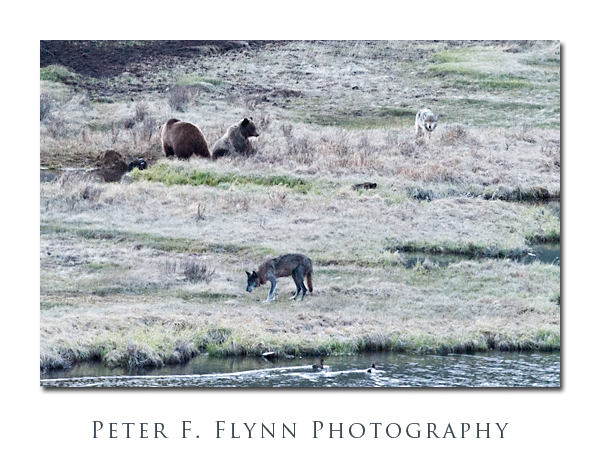 The bears become agitated with the presence of the wolves, and occasionally turn and charge them as shown in the image below. The wolves give up only minimal ground and return to close proximity as soon as the bears turn back to the carcass.
The bears become agitated with the presence of the wolves, and occasionally turn and charge them as shown in the image below. The wolves give up only minimal ground and return to close proximity as soon as the bears turn back to the carcass.
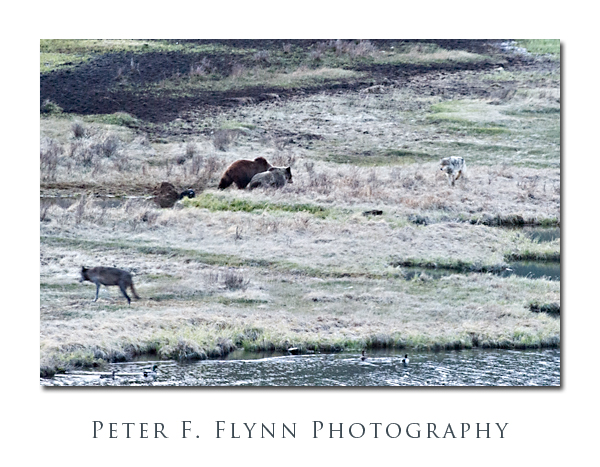 As remarkable as it was to view this remarkable interaction, things got even more interesting. A third bear descended post haste upon the ponds from the high ground to the north. Watching this animal descend the hillside provided clear evidence in support of the adage that you cannot outrun Griz – not a chance, not even close. This larger animal intimidated the sow and big cub, who moved off the carcass without putting up any sort of protest (see below).
As remarkable as it was to view this remarkable interaction, things got even more interesting. A third bear descended post haste upon the ponds from the high ground to the north. Watching this animal descend the hillside provided clear evidence in support of the adage that you cannot outrun Griz – not a chance, not even close. This larger animal intimidated the sow and big cub, who moved off the carcass without putting up any sort of protest (see below).
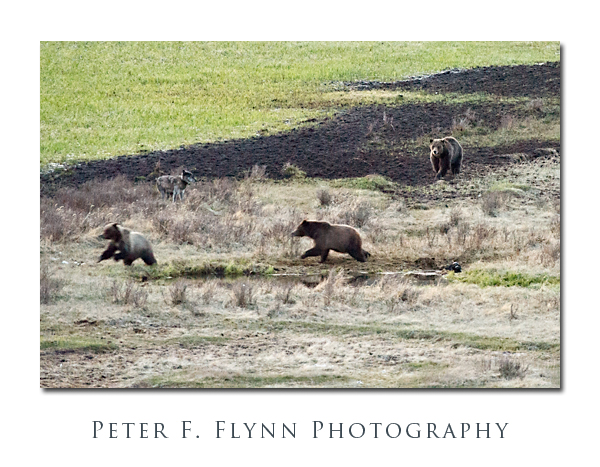
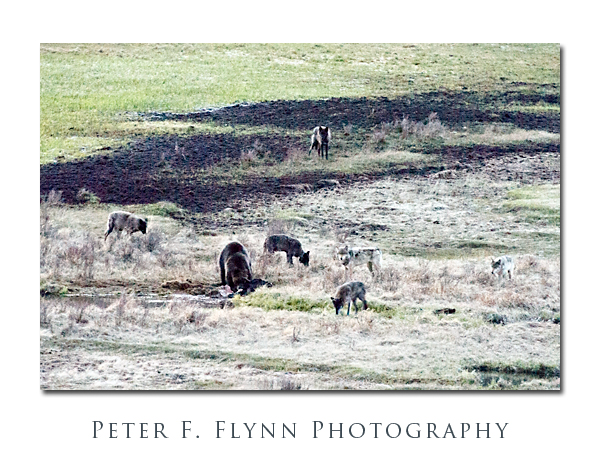
The bear does most of the feeding, that is certain, but by my conservative estimate, Ursus Actos Horibilis get nipped in the backside about every 30 seconds for the privilege. Dude, those wolf bites are gonna smart some in the morning… When the bears do finally get their fill, the wolves were on site to consume everything left. Curiously, I never saw a wolf or coyote venture into water, not even paw-deep. Canids generally seem to tread water without fear, members of Canis lupus familiaris even seem enjoy a good swim, so it is a little odd that the wild cousins are apparently hydrophobical (hee hee).
Images of Grizzlies and the Blacktail Wolf Pack were recorded at between 21:00 and 21:30 MDT using the D3s and the 200-400mm lens at 400mm. Yeah, that was around 21:00. Checking the almanac, sunset was at 22:00, but with the overcast sky, it seemed much darker than anticipated. Exposure was in the range of f/5.6 to f/8, with shutter speeds in the range of 1/5s to 1/15s, with ISO set at 25600. Being able to recorded images under such low light is excellent, but there are issues. Chief among them are WB and apparent exposure level. As the images above reveal, I am still experimenting with WB. Auto WB produces images that seem too blue-green, but what do we think is appropriate? Right now I’m thinking that late evening coloration might be best. Ditto on the apparent exposure. I’ve also been experimenting with BW conversion – stayed tuned for some examples.
Copyright 2010 Peter F. Flynn. No usage permitted without prior written consent. All rights reserved.
